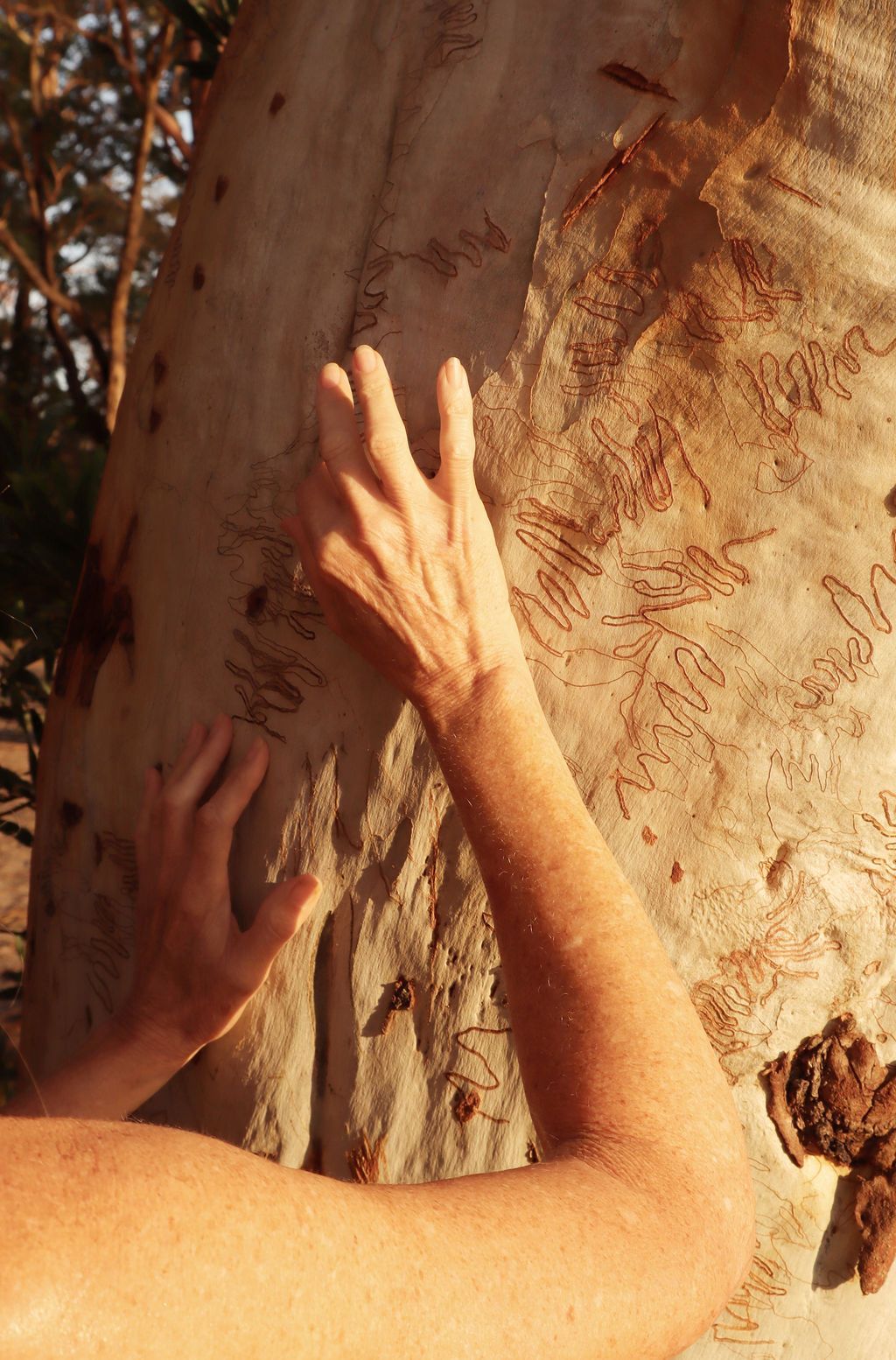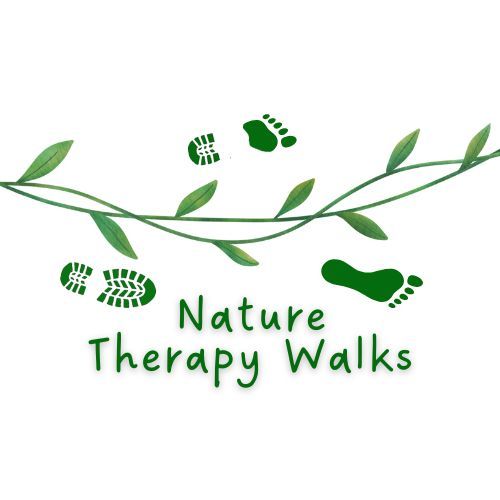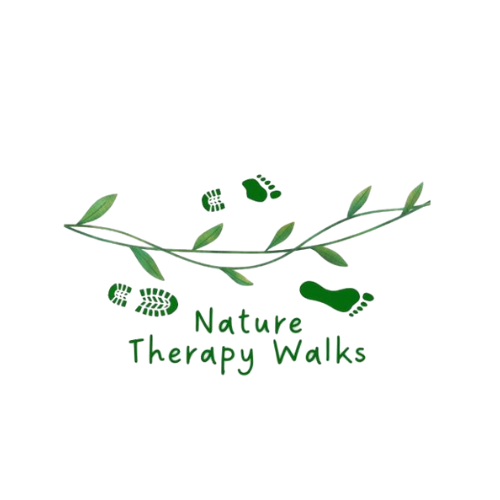
Separation from source
In The Spell of the Sensuous, David Abram argues writing itself might be the essence of humanity’s separation from the natural world that sustains us.
Writing is a symbology for the things of the world. The words we use, transcribed into letters arranged in a specific formation, signify things but don't give us any felt connection to the things themselves. And right there is the foundational split between humans and their natural home.
Language became human beings’ superpower. No other animal had it. Dictionary in hand, we could “exchange the wild and multiplicitous magic of an intelligent natural world for the more concentrated and refined magic of the written word.” Once we could spell, we were able “to cast a spell upon our own senses.”
For someone who has made a living through writing, and is a nature therapy guide, this was miserable news.
I think therefore I am
We are addicted to the symbols of phenomena because they engage our brains in thinking about phenomena, and thinking is our constant activity. Thinking mattered to our civilisations long before Rene Descartes declared it the essence of our existence.
We learn from our early toddling, howling, innocent days that we must train the brain, through education, language, argument and knowledge. Bright brains mean good jobs, scientific research, new product development, new businesses, materials, entertainments, even a vast invisible network of code that connects us with everything that all the other brains on the planet have been able to translate into symbols.
We are very good at this.
Intelligent language
Words allow us to feel we’ve got it all nailed down. Not just nomenclature and syntax, but feelings and thoughts and everything else that all the words we know can express. Try to learn another language and you soon appreciate the glory of a native vocabulary. There is a deep chasm of time and effort between, “Where is the bus station please?” and the ability to hold a conversation in a foreign tongue.
Spoken and written language defines our human intelligence. Even in the midst of other humans who speak a language we can’t understand, we have faith in the sophistication of their communication. They are not grunting like pigs. They are communicating with words that can be captured alphabetically, even if the alphabet itself is alien to us. They are part of the superior species with consciousness and smart phones. Pigs just grunt and are, therefore, lesser. Expendable. Edible.
And yet, nature has its own vocabulary – of animal dialects, of colour patterns, sounds, textures, smells – that our own way-back-when ancestors understood. Its language is still comprehensible to many indigenous people whose lineage has been able to hold to threads of meaning through generations and genocides.
David Abram might have alerted my brain to its alphabetical addiction, but he is not a linguist. He is an ecologist and philosopher (plus an accomplished sleight-of-hand magician, but that’s another story.) He explores nature’s countless channels of communication.
“To the sensing body all phenomena are animate,” Abram says. “Each thing, each phenomenon, has the power to reach us and to influence us. Every phenomenon, in other words, is potentially expressive.”*
Communicating with a more-than-human-world
If we are open to a broader field of expression, we find the world of nature teeming with animation. We are able to communicate with what Abram called the more-than-human-world in surprising ways that have nothing to do with human language.
If we shift from racing passed nature at busy-human velocity, and slow ourselves down to something more like nature’s pace, we might feel our way towards the “wild and multiplicitous magic” of animals, rocks, trees, rivers, flowers. We might get a sense of intelligence beyond the limits of our word-obsessed brains.
The body of language
One of Abram’s heroes, the 20th century phenomenologist Maurice Merleau-Ponty, argued our native, spoken language is learned not through our intellect but our bodies. Babies express through the noises made by their breath, vocal chords, and mouths and learn language by watching, hearing and mimicking the noises the humans around them make. “We thus learn our native language not mentally but bodily,” Abram says.
Merleau-Ponty said the body’s expressiveness, “extends, as we shall see, to the whole sensible world, and our gaze, prompted by the experience of our own body, will discover in all other “objects” the miracle of expression.”
Feeling into that miracle of expression starts with being open to all the subtle ways nature might communicate with you. Each nature therapy walk begins with your body, with opening your senses and slowing your movements. More than mindful walking, a nature therapy walk is “bodyful” walking.
Bodyful walking
I can write words about the mystical script written on a scribbly gum, but when I’m with a scribbly gum, present to how it looks and smells and feels, I don’t need words to feel my way into our mutual stories.
I know the human story of the retired CSIRO associates who, with a keen student from ANU, set out to solve the mystery of the scribbly gum’s dialect. They discovered 11 new species of moth and DNA links, via ancient Gondwanaland, to the moths’ prehistoric relatives in South America. That story may have a certain scientific romance, but it is – to me – not as powerful as the mystery in the language of all the life cycles written in scrawls over the scribbly gum’s bark.
I thought verbal and written language was my only primary mode of expression, other than the obvious facial and physical gestures. Nature therapy walking has introduced me to the deep pleasures of a physical conversation between my own body and the beings of the world around me. It's the contentment, and the surprise, of open presence in a more-than-human world.
*All quotes from The Spell of the Sensuous, David Abram (1997, Vintage Books, New York) Chapter Three, The Flesh of Language.

